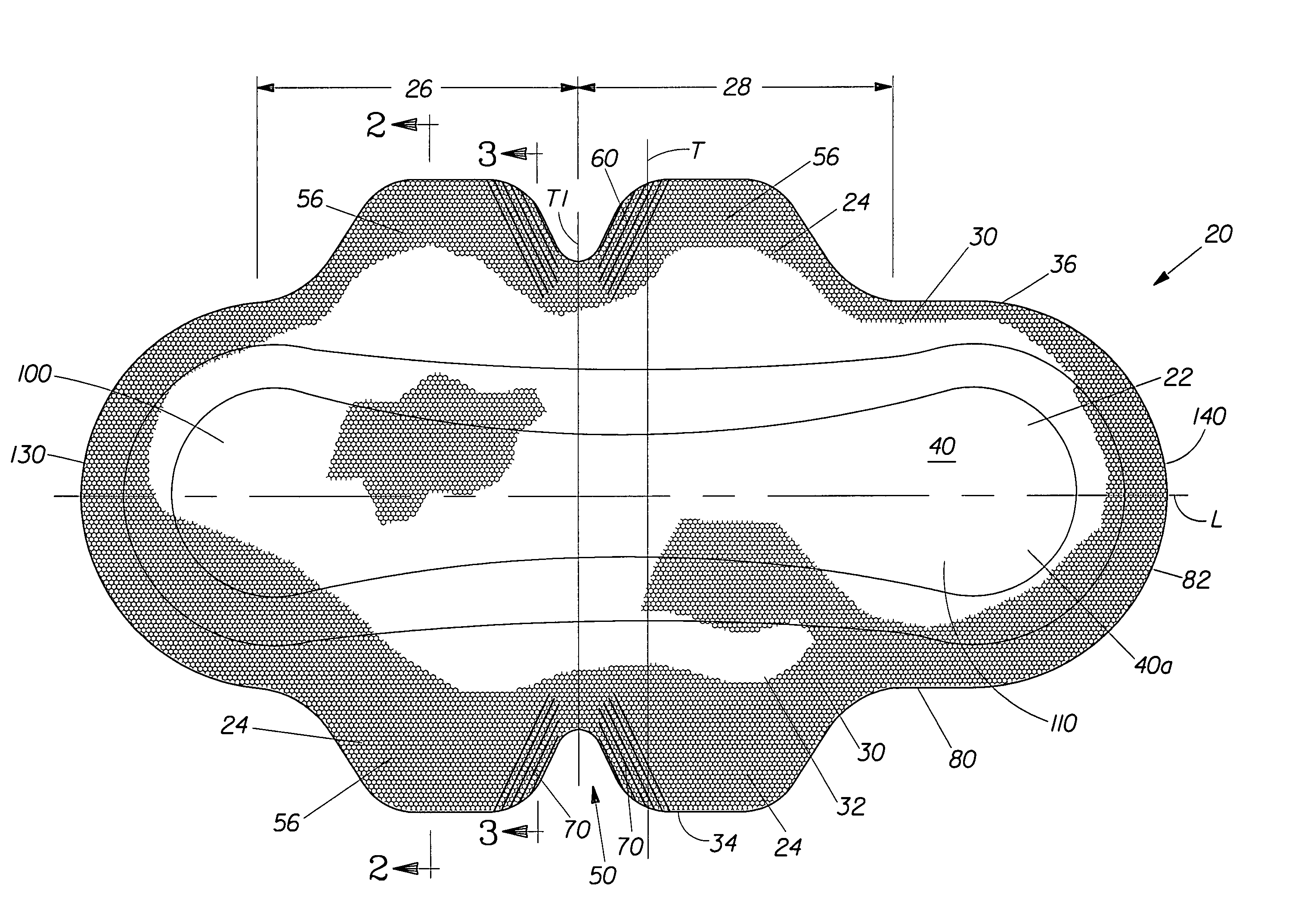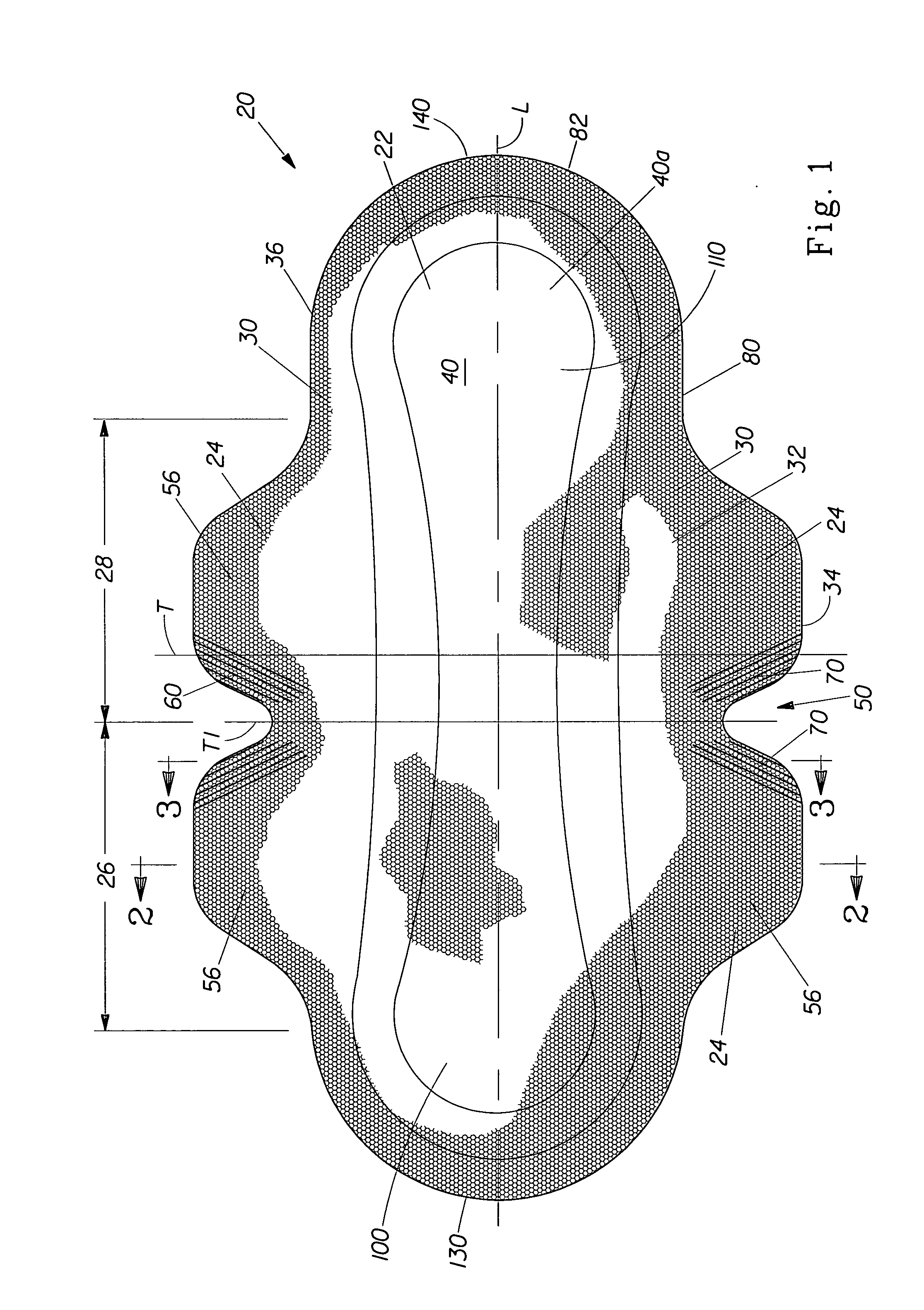Absorbent article having flap activation
a technology of absorbent articles and flaps, which is applied in the field of absorbent articles, can solve the problems of optimal effectiveness, flaps may become detached from the panty, and a portion of the aforementioned benefits of flaps may be lost, and achieve the effect of less stiffness
- Summary
- Abstract
- Description
- Claims
- Application Information
AI Technical Summary
Benefits of technology
Problems solved by technology
Method used
Image
Examples
Embodiment Construction
[0023]All documents cited are, in relevant part, incorporated herein by reference; the citation of any document is not to be construed as an admission that it is prior art with respect to the present invention.
[0024]The present invention relates to absorbent articles such as sanitary napkins, adult incontinence devices, and the like. Still more particularly, the present invention concerns absorbent articles having flaps with a notch and a first zone of anisotropic stiffness for assisting in transferring the force applied by the wearer through the flaps when the flaps are folded down and under a wearer's undergarment and attached to the underside of the undergarment.
[0025]The term “absorbent article”, as used herein, refers to articles which absorb and contain body exudates. More specifically, the term refers to articles which are placed against or in proximity to the body of the wearer to absorb and contain the various exudates discharged from the body. The term “absorbent article” ...
PUM
 Login to View More
Login to View More Abstract
Description
Claims
Application Information
 Login to View More
Login to View More - R&D
- Intellectual Property
- Life Sciences
- Materials
- Tech Scout
- Unparalleled Data Quality
- Higher Quality Content
- 60% Fewer Hallucinations
Browse by: Latest US Patents, China's latest patents, Technical Efficacy Thesaurus, Application Domain, Technology Topic, Popular Technical Reports.
© 2025 PatSnap. All rights reserved.Legal|Privacy policy|Modern Slavery Act Transparency Statement|Sitemap|About US| Contact US: help@patsnap.com



